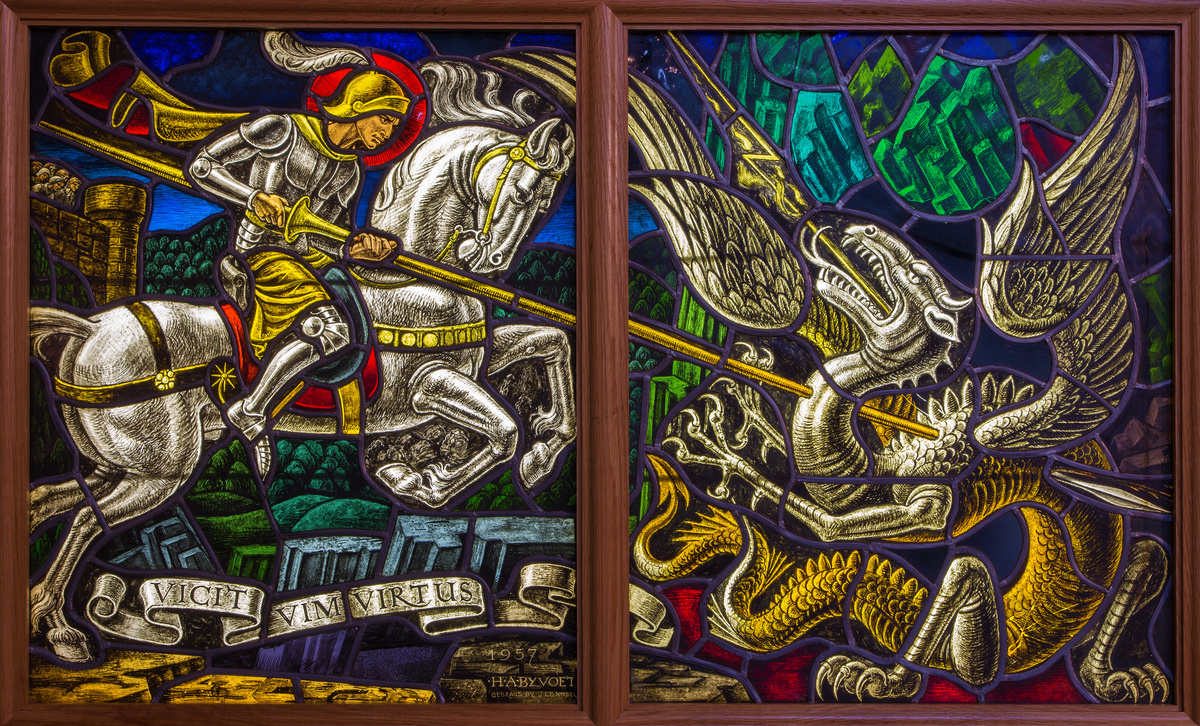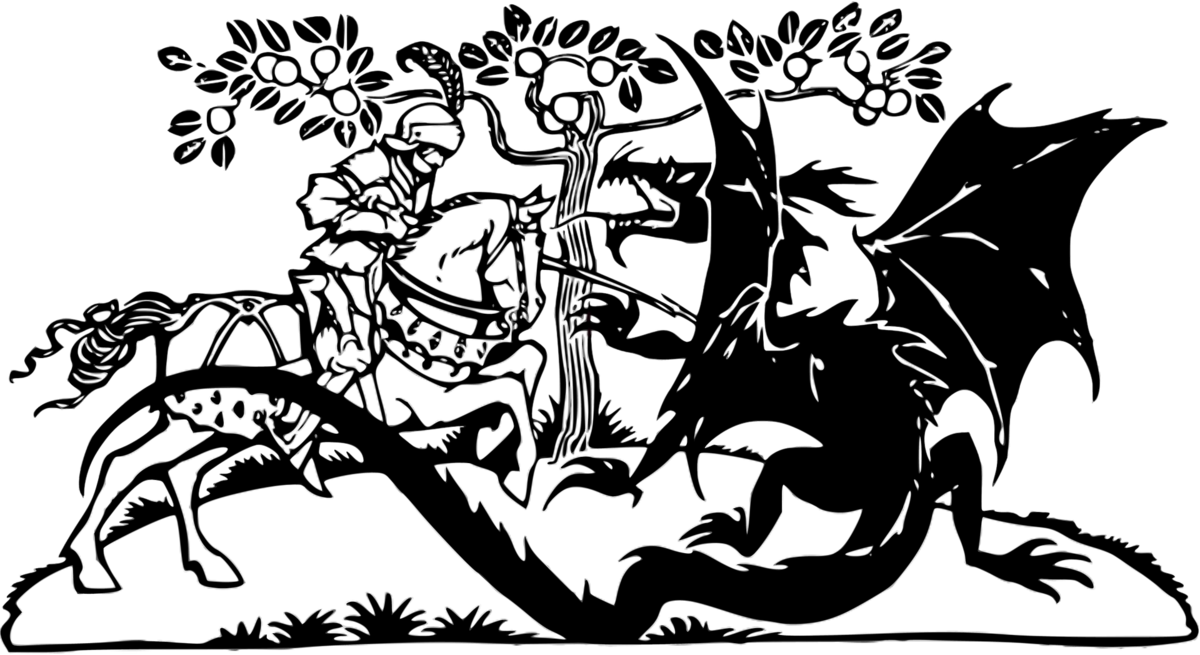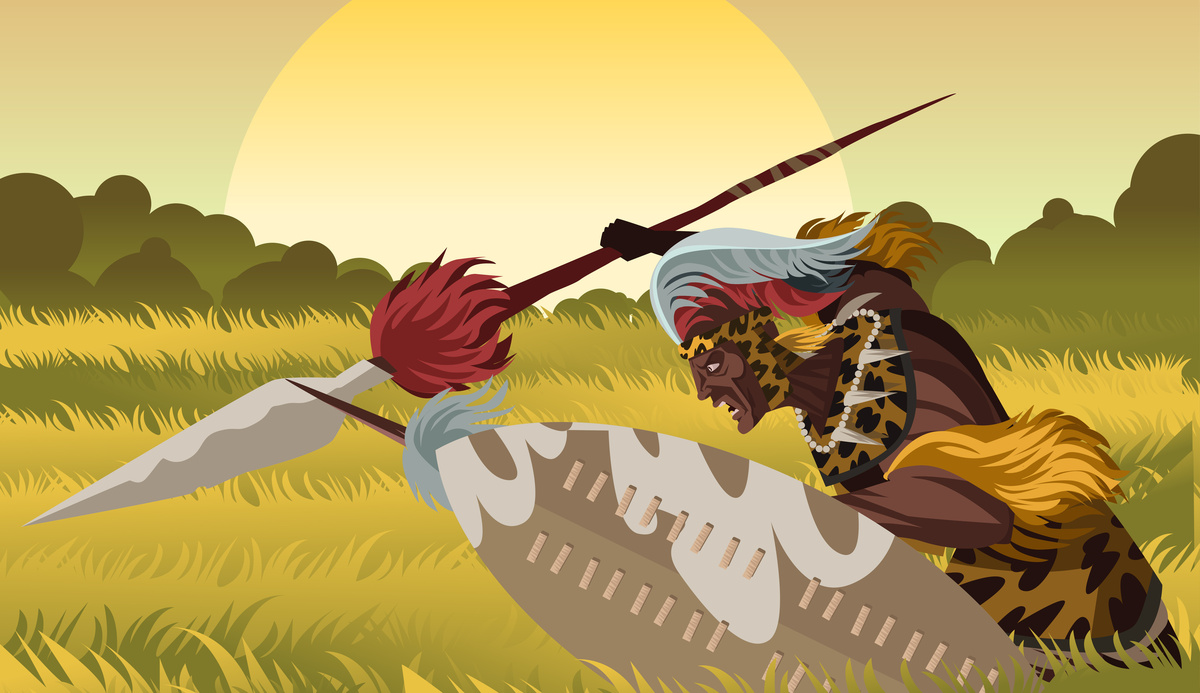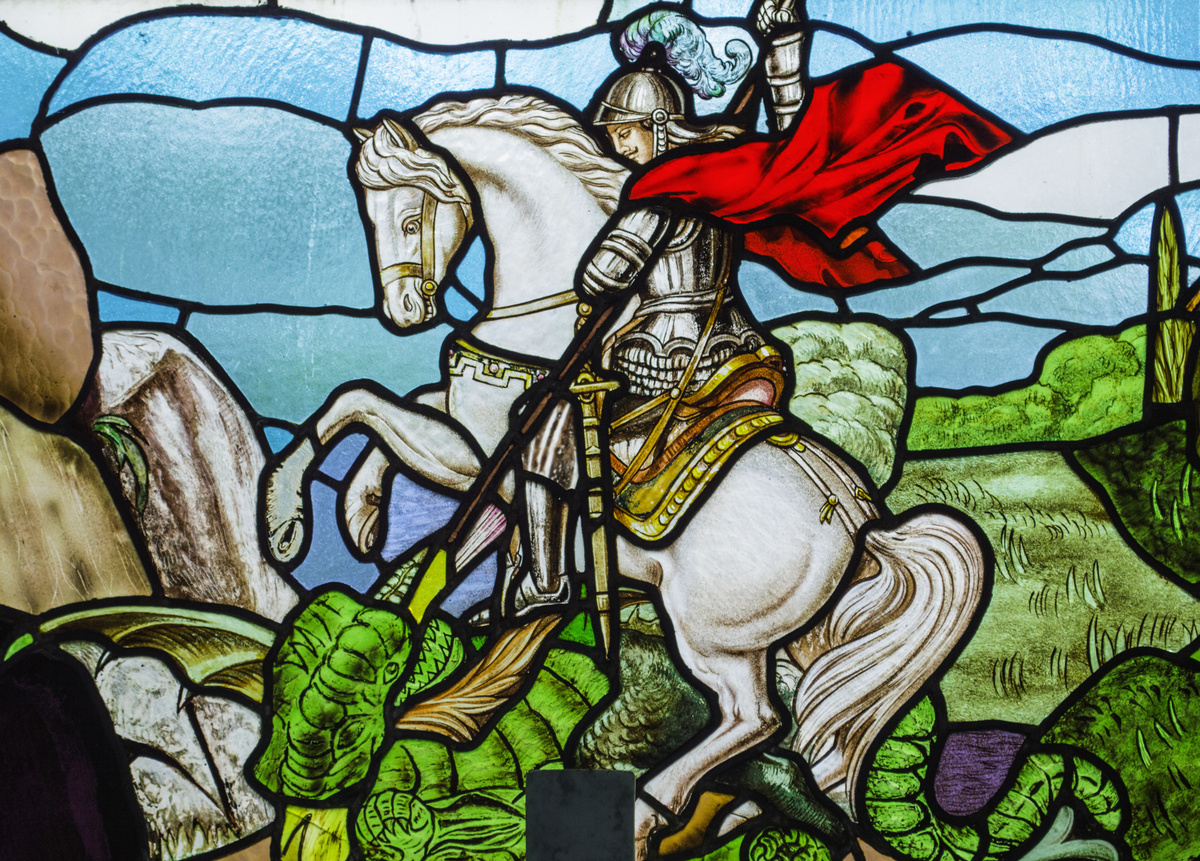Table of contents
Did you know that Saint George is Ogum in Umbanda and Candomblé?

The correlation between Gods of different pantheons has been happening for ages. Take for example, the Greek and Roman Gods: Zeus was Jupiter, Ares was Mars and Artemis was Diana. In the same way, the African pantheon also adapted to the Christian one, generating relationships such as Ogum and Saint George.
Of course, depending on each region, they may present some differences. This happens because of different ethnicities and interpretations. For example, Ogum is considered as Saint George in most of the country, but in Bahia, he is Saint Anthony. Understand better who is this powerful Orixá and its syncretism with Catholicism.
Foundations of syncretism between Saint George and Ogum

First of all, it is fundamental to understand what is this religious syncretism they talk so much about. Besides, associating it to the colonization process will help you better understand why it exists. See these fundamental details, which already explain many of the doubts you may have.
What is syncretism?
In general terms, syncretism is the union of elements from different cults or doctrines, for example, the African matrix and Catholicism. It happens through the association between deities, in practices and even places of prayer or contemplation.
A good example is the washing of Senhor do Bonfim, in Bahia. Baianas from the African tradition - either Umbanda or Candomblé - wash the steps of the Bonfim Church and shower the faithful with popcorn. United practices, with the celebration of mass by the Catholic priest and the beating of atabaque.
Syncretism and colonization
Religious syncretism can happen for several reasons, among them the acculturation of peoples or even imposition and need for survival. In the process of colonization of Brazil, unfortunately the African people were brought as slaves and often found themselves forced to abandon their culture and beliefs, "accepting" Catholicism.
One way to get around this imposition of the Lords and the church was to associate Catholic saints with their Orixás. And that is how the syncretism between these two religions developed, remaining until today. Among the best known, celebrated in music and in the popular imagination, is the fusion between Ogum and Saint George.
Aspects about Saint George

For the Catholic Church, Saint George is one of the warrior saints and patron saint of several cities - such as Rio de Janeiro and Barcelona - and countries around the world. To give you an idea, Portugal, England, Lithuania, Genoa and many others have him as a Catholic symbol. Learn a little more about the saint, his history and the famous legend of the dragon.
St. George's Day
Saint George's Day is celebrated on April 23rd, a holiday in Rio de Janeiro and a date celebrated in many countries around the globe. He is celebrated on the day of his death in the year 303 AD.
History of Saint George
George was born in Cappadocia and moved to Palestine with his family. As a teenager, he became a military man and by the age of 23 was already part of the imperial court, such was his bravery. When he was ordered to leave Christianity and worship the Roman gods, he resisted.
He donated his fortune to the poorest and reneged on the Roman pantheon, being tortured several times. His strength was such that the queen herself converted to Christianity. Then he was beheaded, but not without first receiving the recognition of the people.
Saint George and the legend of the dragon
The story of the brave warrior Jorge became Saint George and, as could not be otherwise, several legends were told about him. Among them, that of the fight with a dragon that threatened a city, devouring all the local maidens.
It was then that a distant villager, George, emerged on a white horse and rescued the last maiden of the town, daughter of the queen and king. Her father did not want the marriage because he was a Christian, but the princess ran away with him and they lived prosperously and happily.
Aspects about Ogum

Ogum is a warrior and temperamental Orixá, but just and wise. He has the gift of working metals and carries with him a spear or sword and a shield, opening paths and fighting evil.
His element is Air and his irradiation is magnetizing. Among the best known are Ogum Akoró (linked to Oxalá), Mejé (linked to Exu), Waris (Oxum), Oniré (Lord of the Irê), Amené (also linked to Oxum), Ogunjá and Alagbedé (both linked to Yemanjá). Know a little more about this powerful Orixá.
Ogum's Day
The day in which Ogum is celebrated is the same day of Saint George, April 23rd and his day of the week is Tuesday. On this date, it is customary to prepare offerings to the Orixá and rethink your own paths. It is a moment of reflection and planning, choosing the weapons for the battles chosen by you.
History of Ogum
Ogum is the son of Yemanjá and brother of Exu and Oxóssi, he is a brave warrior, who protects his children and opens paths, bringing abundance and prosperity. He is the Lord of roads and iron, working as a blacksmith, a craft passed down to help men in victory and agriculture.
He was the first Orixá to visit the Ile Aiye, or Earth. His purpose was to provide the best conditions for human beings to survive. Because of this, he came to be recognized also as Oriki or Osin Imole, translated as the first orixá to come to Earth.
Ogum and the legend of how he became Orixá
According to the legend originating from Africa, Ogum was a brave warrior, son of Odudua and always brought victory to his kingdom. And it was on one of these returns that he arrived during a holy day, but he could not remember because he was tired and hungry.
No one was allowed to speak, drink or eat. When he arrived in the deserted city, without being greeted or received with the slightest food or drink, he went knocking on doors, being ignored. He then became furious and began to destroy the city and kill the inhabitants.
His son then arrived with drinks, food and clean clothes. It was then that Ogum realized that it was the sacred day and remorse overcame his heart. After days of lamenting, he took his sword still soiled with blood and drove it into the ground. It was then that he opened a crater in the ground and passed into the sky of the Gods, becoming an Orixá.
Syncretism between Saint George and Ogum

There is a strong syncretism between Ogum and Saint George all over Brazil - remembering that in Bahia the Orixá is related to Saint Anthony.
Similarities
The religious syncretism between the African pantheon and Christianity counts on the similarities between some remarkable traits of its characters. In this way, it is correct to point out that the main characteristic that unites Ogum to Saint George is his bravery and the fight for his own.
The main similarities between the Saint and the Orixà are their strength, courage and sense of justice. Both fight for what they think is just and for their fellow men, becoming leaders in their first phase and martyrs after the passage to enlightenment.
Distances
In the same way that there are clear similarities between the stories of Saint George and Ogum, there are also clear distancements. These are what show the differences between the personalities, such as anger and vanity.
While the legend of Ogum shows an access of fury, killing his own people, Saint George did not give in to torture until death. Ogum was also vain and liked parties and relationships, while Saint George was chaste and donated his fortune to the people - except in the legend of the dragon, where he marries the princess.
Non-acceptance of syncretism between Saint George and Ogum

Just as there are those who support syncretism, there are also those who prefer to keep their faith in its original form. See what each side argues against the relationship with Catholicism.
For Umbanda and Candomblé
Certainly, although it is increasingly common to find people who unite several liturgies, there are those who do not accept mixture or more than one interpretation. A good example is an old question between Umbanda and Candomblé about who is the corresponding saint, because for Bahians, Ogum is actually Saint Anthony and Saint George is actually Oxóssi.
Both religions are the fruit of the union of distinct nations and creeds, originating from Africa. Thus, syncretism is in its essence. However, there are also those who are more purist and do not accept syncretism with the creed of the colonizers, through a more unyielding posture.
For Catholicism
While there are more purist lines in African traditions, there are also Catholics who are more resistant to this union of cultures and creeds. Perhaps they do not realize that it is not necessary to adopt the faith of the other, just accept it as another interpretation of what the Sacred is for each one.
There is a part of the Catholic Church that does not support syncretism or any other similar practices. More orthodox, it believes only in the teachings of the Bible and in the Catholic saints, dispensing with any connection with the African pantheon.
Prayer of Saint George and Ogum

If there is one thing that both traditions have in common is the prayer. Of course, each one in its own way, but it is present. Know then the best known of St. George and Ogum.
Prayer of Saint George
The prayer of Saint George is also used for Ogum, just changing the terms. Very well known, it is present in MPB and is part of the popular repertoire. Know this powerful prayer of protection:
I will walk clothed and armed, with the weapons of St. George.
So that my enemies having feet cannot reach me,
Having hands don't get me,
Having eyes can't see me
And no thoughts can they harm me.
Firearms my body will not reach him,
Knives and spears will break without reaching my body,
Ropes and chains will snap without my body tying them down.
Glorious Saint George, in the name of God,
Extend me your shield and your mighty rings,
Defending me with his strength and with his greatness,
From the power of my carnal and spiritual enemies and all their evil influences.
And that under the paws of his faithful rider,
My enemies be humble and submissive to you,
Without daring to get even a glance that could harm me.
So be it, with the power of God and Jesus and the phalanx of the divine Holy Spirit.
Amen.
Ogum Prayer
Ogum shares the same prayer of St. George, given the syncretism, but of course there are several prayers turned only to the Orixá. Among them, are the points, which are also prayers, but sung. Repeated as mantras - only much more animated - the points are of an incredible force. Know one of the several points of Ogum:
In this warrior's house
I've come a long way to pray
I pray to God for the sick
In Obatalá's faith
Ogum salve the Holy House
Those present and those absent
Save our hopes
Save the old and children
Nego came and taught
In Aruanda's booklet
And Ogum didn't forget
How to beat Quimbanda
The sadness is gone
On a warrior's sword
And the light at the break of dawn
You will shine in this yard.
Patacori Ogum! Ogunhê my Father!
Is the syncretism between Saint George and Ogum valid?

All and any faith is valid, as long as it has the respect for life and seeks the evolution, the factual reconnection. So, certainly the syncretism born in the colonies and propagated by generations has its validity even today.
If when praying to a Saint or Orixá, your heart is turned towards the Sacred - whatever you call it, it's perfect. The syncretism only brings people and their creeds even closer, directing more and more our gaze towards the great creation. Take the opportunity to know the most famous point of Ogum, Winner of Demands:

